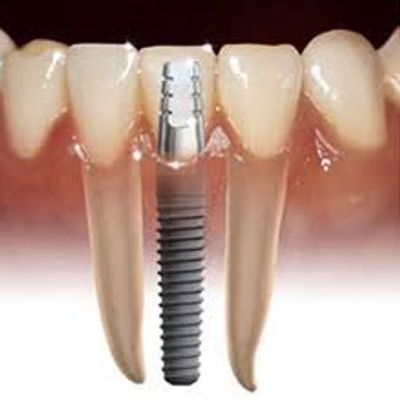our services

Implants
A dental implant is a titanium artificial tooth root that is placed into your jaw to hold a replacement tooth or bridge. Dental implants may be an option for people who have lost a tooth or teeth due to periodontal disease, an injury or some other reason.
The ideal candidate for a dental implant is in good general and oral health. Adequate bone in your jaw is needed to support the implant, and the best candidates have healthy gum tissues that are free of periodontal disease. Dental implants are intimately connected with the gum tissues and underlying bone in the mouth. Since periodontists are dental experts who specialize in gums, a periodontist has the special knowledge, training and facilities to successfully place your dental implant. Dr. Thomas will work with you and your dentist to ensure proper treatment planning and coordination so that the ultimate restoration is ideal.
Scaling and Root Planing
Scaling and root planing is a deep cleaning procedure completed under local anesthetic. The deep cleaning helps to remove the bulk of the root surface plaque and tartar so that the environment is conducive to soft tissue healing. The gum tissues are reevaluated approximately four weeks post scaling and root planing and further treatment options may be suggested. These treatment options include periodontal surgery.
Periodontal Surgery
Periodontal surgery involves moving the gums away from the tooth and bone so that one can gain access to clean deep onto the root surfaces. The gum tissue may be recontoured such that the healed environment is more conducive to both home and office maintenance. Bone grafting and guided tissue regeneration may be utilized during periodontal surgery if the bony defects are amenable.
Bone Grafting
If the bone loss around a tooth is mote like or between the roots, bone grafting may help to replace lost bone. Bone grafting materials can be 1)Synthetic, 2)Allograft: Donor bone. 3) Xenograft: Animal bone or 4) Autograft: From the patient. The type of bone grafting material utilized may vary from situation to situation.
Guided Tissue Regeneration
The use of a collagen membrane to cover the bony defect and bone graft may help to "regrow" the lost bone and ligament surrounding the teeth. This membrane acts as a barrier to prevent the gums from growing into the bony defect before the bone has a chance to "regrow."
Soft Tissue Grafting
Soft tissue grafting procedures are utilized to replace gums lost because of recession. Progressive or symptomatic recession defects may be treated with 1) Free Gingival Grafts, or 2) Connective Tissue Grafts. These grafts act to create an ample band of gum and to cover as much recession as possible.
Clifford Thomas DDS
Copyright © 2023 Clifford Thomas DDS - All Rights Reserved.
Powered by GoDaddy